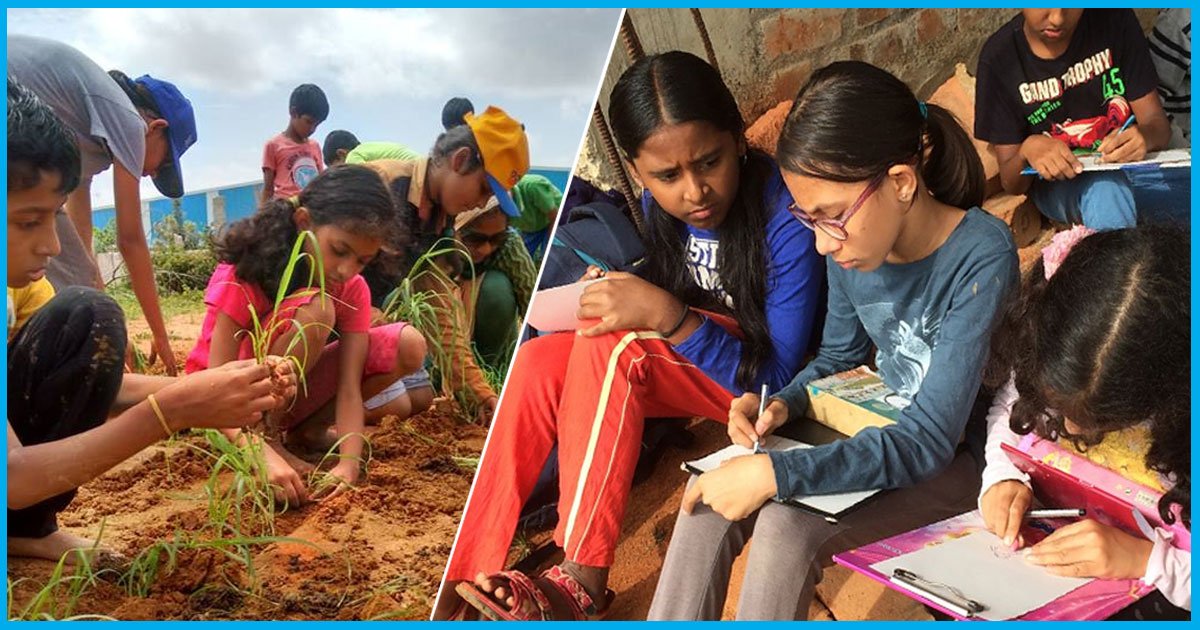
The Ragi Project: Connecting Children With Their Food Source Through Education
22 Nov 2017 11:07 AM GMT
We have all seen those posts on our Facebook pages. The ones that talk about how children need to visit more farms to understand where their food comes from. With grocery magically appearing at the doorstep, it is difficult to think about an elaborate network behind the crate. Don’t strawberries simply grow in our refrigerators?
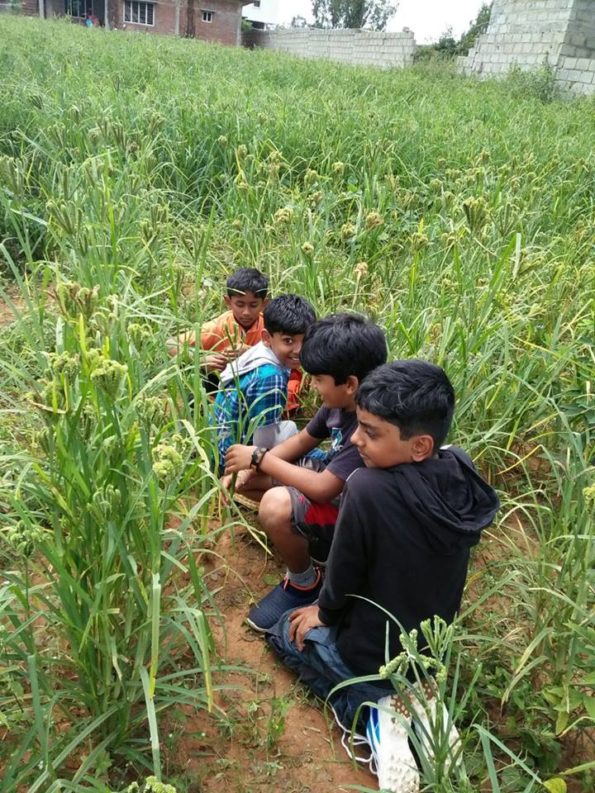
It looks like one school is ensuring that children more than just know about the source. The Ragi Project– a collaboration between Azim Premji University and Poorna Learning Centre, Bangalore is a year-long endeavour wherein children from this school will grow, harvest and cook ragi or finger millet. The project aims to support this farm work with classroom learning on relevant topics. Over phone, I spoke to Pallavi Varma Patil, faculty at the Azim Premji University who helped set up this project along with the teachers and students at Poorna.
Patil’s research focuses on theme-based teaching and Gandhian Basic Education. The food aspect, she adds, comes through her interest in exploring how food and identity are strongly linked. “For two years I have been focusing on food. I did a lot of research on how food-related courses are structured in universities world over. This research led to conducting a 5-day course at my university on Food and Identity. I found many classroom-based resources in the western context where themes of food and the city are explored. With diverse populations, food becomes an interesting topic to explore and talk about one’s experiences. A colleague of mine helps with social science-based activities at the Poorna Learning Centre. He suggested that food can be the focus of a few exercises, wherein I can get involved. I also conducted an exercise on food associated memories with the teachers at Poorna and that got them very interested in exploring food further. Poorna has a community kitchen where everybody comes together to cook on Wednesdays. By growing food, we realized, we could bring it all together for the children, and complete the cycle.”
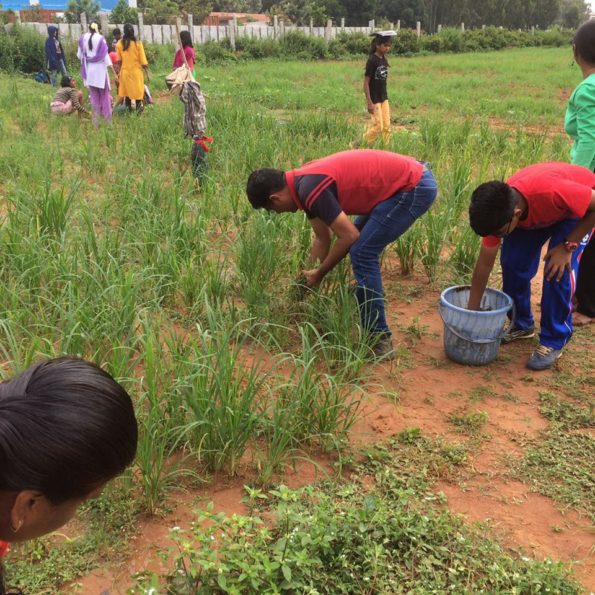
Patil explains that this also falls in line with her interest in Gandhian education. “Gandhian Basic Education is about learning through work or what we phrase as “kaam ke zariye shikhsha”. It is different from activity-based learning. It’s not that you think of a concept and design the activity around it. This system believes in aligning education with relevant work. For example, here we are trying to fulfil a basic need which is food, and work towards it.“
The Ragi Project began in June 2017, in a half-acre plot near the school. Students of class 4, class 5 and class 6 are mainly involved. Students from the higher classes help out in various activities such as soil testing and the younger students visit the farm from time to time to understand what is happening. They are also asked to draw their observations. The project is a team effort of teachers and students of the school, Patil shares proudly, as she informs that December 6 is the day they are all eagerly waiting for. It is the day they get to harvest the ragi.
While it sounds like the students decided to grow ragi, and they went ahead and did just that- the reality is, it was not that straightforward. Patil shares that they consulted organic farming expert Narayana Reddy and even visited his farm. “He insisted that it’s really about the soil and all your work must be on the soil. We kept looking back at our farm and thinking, there is nothing that has been done on this soil. It has been lying barren for two years.”
The team worked through each hurdle, gaining knowledge along the way. The Ragi Project blog gives us a peek into their trials with mulching, weeding, waiting for rains and so much more. Patil adds that there were many surprise learnings also. “We had a whole session on entomology, and we identified 20 different insects on the farm. It just so happened that we saw some insects and that became a study in itself. Seena Narayanan, Senior Research Associate at ATREE (Ashoka Trust For Research in Ecology and the Environment), helped us out. It took just one session with her for the children to get interested. I saw many of them head to the library to learn more, or look for specimens by themselves.” Ecological support for this project is also provided by Laksh Kumar of Agastya Foundation.

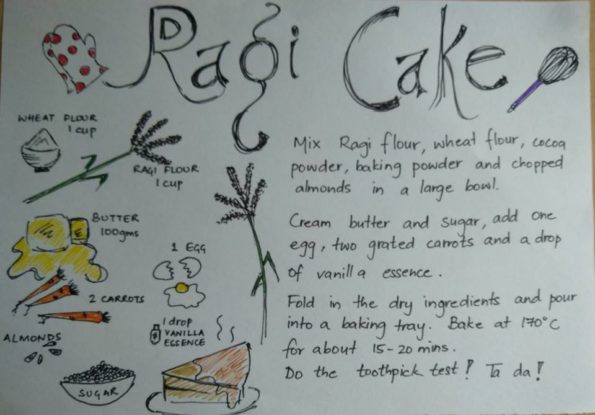
The school kitchen is gearing up for the harvest by churning out ragi in different forms and trying to find interesting ways to incorporate it into the food. “The whole idea was that we must promote ragi as a part of our everyday diet. The typical recipes that we usually find are ragi malt or ragi mudde. It was a challenge for us to see how many different things we can cook with ragi. Almost every Wednesday we tried very hard to include ragi in one way or the other. Of course, there days when kids would refuse to eat ragi in any form,” she adds with a laugh. The recipes will soon be available in the form of a cookbook based on this project. Along with ragi, they are also growing Toor or Pigeon Pea and Beans. The beans were harvested and cooked right away. “That was an actual farm-to-table experience for all of us,” says Patil.
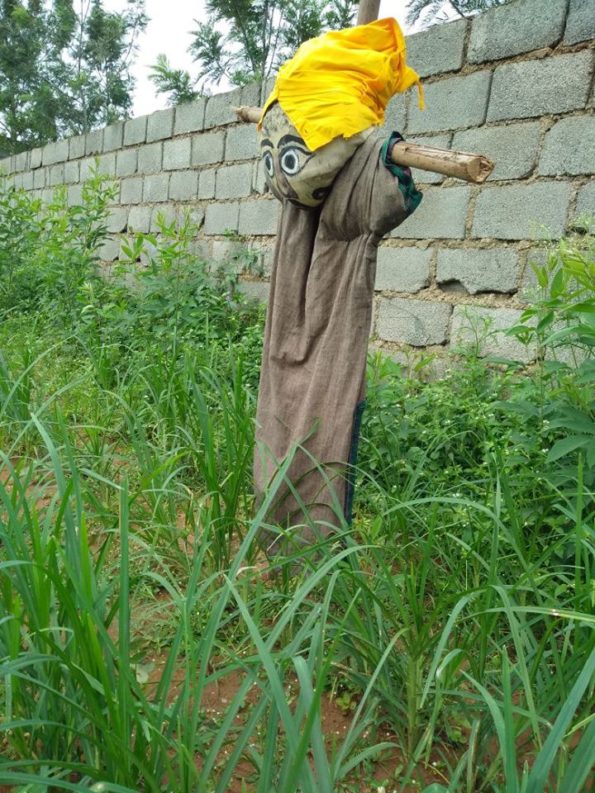
“This project will end at some point, but now that we have the hang of it, we are thinking what more can we do? One suggestion was to grow cotton- so we have food and clothing covered. That is one thought. We are also thinking about groundnut because it is another hardy crop that we can grow with less water,” says Patil.
On a school visit in Udaipur, Patil found that they had agricultural land for this kind of activity but were sceptical about initiating it. Her advice to them and anyone interested in a similar module is the same- “You just have to start. It’s not only about the food. We realized based on our journey with this project that there is so much you can connect with and build an overall interest for the children. Just start somewhere.“
Towards the end of the interview, Patil talked about some of the fun moments they have had during this project. From making scarecrows using old clothes to making their own ragi seed packets with the right instructions, there were a few. But one moment stood out for everyone. “Mr Narayana Reddy had told us that if we have earthworms in our soil, half our problems are solved. When we started growing ragi, there was a moment when we saw an earthworm, and we all screamed with joy. Imagine a bunch of class five students shouting- I saw an earthworm,” she shares laughing.
For more information visit http://theragiproject.weebly.com/.
 All section
All section
















